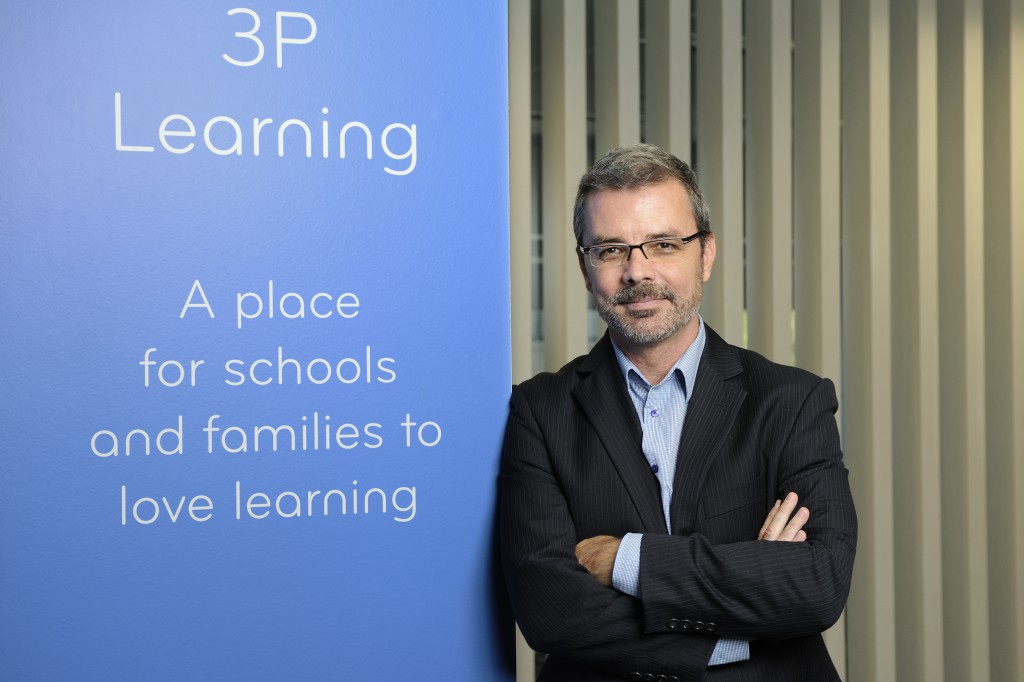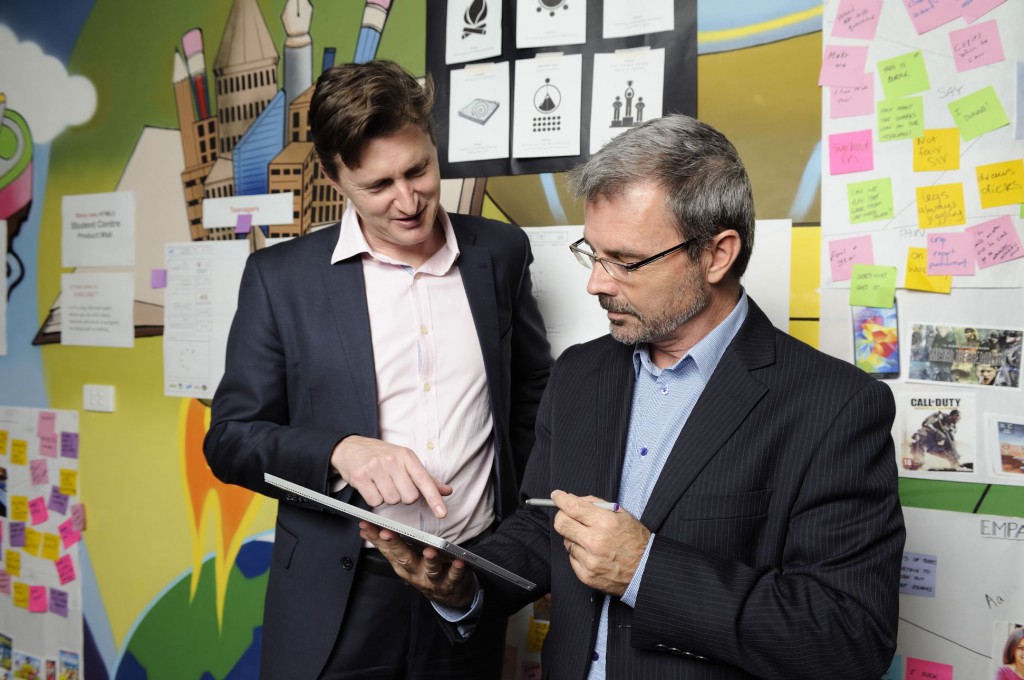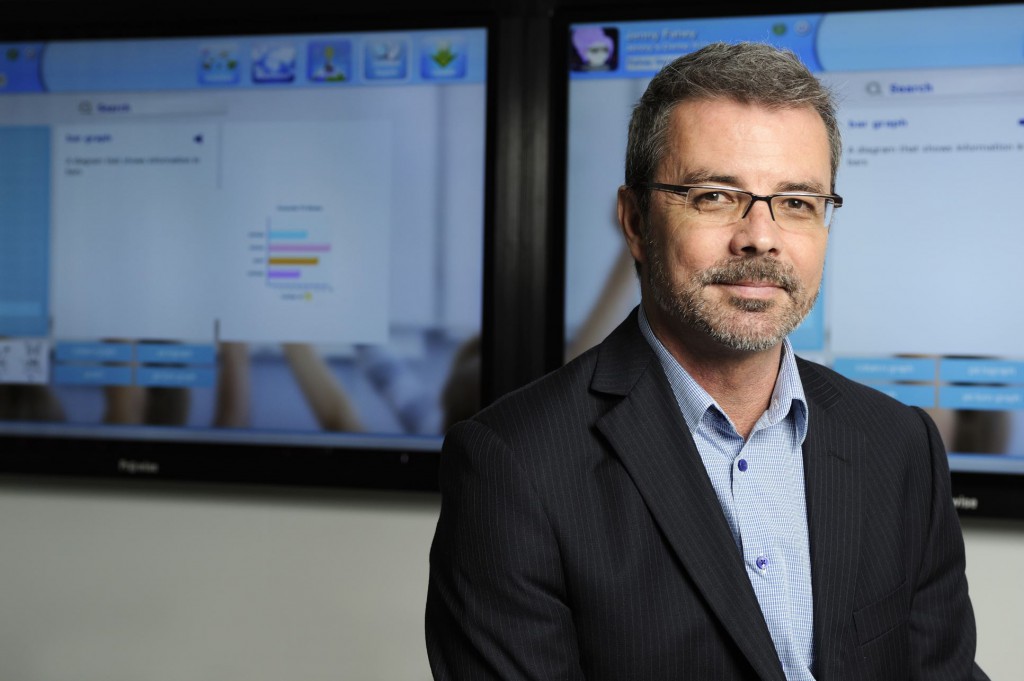10 minutes with Andrew Smith, CEO 3P Learning Australia
Microsoft is pleased to announce that 3P Learning, a global leader in online education, is bringing its online resources to the Windows platform. Mathletics will be available from July, with the hope that other resources, such as Spellodrome, IntoScience and Reading Eggs, will become available in coming months. We spoke with 3P Learning CEO Andrew Smith to find out a few things about the e-learning giant.
Who is 3P Learning?
At 3P Learning, we’re passionate about both technology and education, with a focus on three key subject areas: Maths, Science and English. We currently have offices in ten countries, and target the K-12 market of teachers, parents and students. We’re an Aussie company but we export our ideas across the world and there are currently 4.9 million students using our resources. 3P was one of the first in the market to make a real impact in education and we’ve become one of the largest education providers online, particularly in the Maths space.
What’s your background in education?
I come from a teaching background of more than 20 years in the classroom as a primary school teacher. I’m from the United Kingdom originally and I’ve been in Australia for 25 years now. I started with 3P nearly ten years ago, at the time when Mathletics launched online. My very first role with the company was working directly with schools as a Regional Manager, supporting teachers to get the best possible learning outcomes from our resources. I’m now the Chief Executive Officer of the Australian and Asian operation, a role I’ve held for the last five years. Going from the classroom to a corporate environment has obviously had its challenges at times, but I’ve learnt a lot on my feet in this role and I’m still constantly learning.

And how did 3P Learning start?
The original seed of the idea came from a Sydney-based teacher in 2003. He came up with an innovative idea called Scaffolding Maths, an offline program using Microsoft Excel to generate random questions which were then auto marked. It was a local install on a laptop or desktop, so it wasn’t internet based at first. The hope was to give students a more motivating and rewarding experience learning maths, rather than the traditional textbook approach.
At the turn of the century there was a move towards the use of laptops in schools and the need for online or information communications technology based resources was growing at a rapid pace. The first seeds of Mathletics involved students working on targeted activities as well as fluency practice in a live ‘arena’ against students from around the world. We have developed significantly since then.
What are your most popular learning resources?
We have three apps that we produce: IntoScience, Mathletics and Spellodrome. Mathletics is a curriculum-linked program, targeting students in terms of engaging them in their learning and getting them passionate about maths. One of the great things about Mathletics is that all the questions are adaptive, targeting students at their different learning ability levels. Students have the choice to either compete against peers in their class, the wider school, or they can choose to compete against other students from around the world.
IntoScience is a new resource using a highly-engaging 3D environment where students can learn by doing. Students are taken on a journey and given prompts and activities for them to explore the world of science. It is Australian Curriculum aligned, featuring video, virtual experiments, learning activities, topic tests and a series of virtual worlds, such as the African Savanah. IntoScience has been developed following the principles of inquiry learning and reasoning.
The third resource we have is called Spellodrome and is focused on literacy. It’s quite similar to Mathletics in the way that it’s an online game in which students play against each other. Teachers can set up a whole range of resources to help their students in literacy learning, but it focuses primarily on spelling. We also exclusively distribute ReadingEggs to schools in Australia and a number of other countries.

Why are you migrating to the Windows platform?
We want to ensure that 3P resources are available on all platforms – Android, IOS and Windows – giving learning access to our students regardless of the device they’re using. We’re also taking all of our assets and moving them into Microsoft’s Cloud, Azure. By partnering with Microsoft, we want to learn and grow together and continue to provide the world’s best resources to our kids and to our schools. The love of learning is crucial to us, we talk about it all the time and at 3P we live it.
What innovation are you bringing to the Windows platform?
At 3P learning, we’re always looking for new ways to innovate, and we’re looking forward to working with Microsoft as we continue to grow. In particular, we hope to further develop 3D gaming and the role it plays in education. With Mathletics, we’re also beginning to develop the use of pen technology for our Surface users so the students can write on screen and continue to blend both traditional and digital learning.
What role do apps play in the learning environment?
Online education and the world of apps has motivated and engaged students like never before, bringing education into their world. Students these days are digital natives and obviously a lot of the teachers are too. Most importantly, these innovative resources allow learning to happen anywhere at any time, breaking down the barriers between home and school. It allows for content, material or subject matter to be specifically targeted at students and their various ability levels like never before, unlike traditional text books which tend to target the middle of the class.
Apps also provide students with instant feedback, which helps them to understand whether (a) they need help and are struggling, or (b) they’re doing well and can continue on and move to the next level in their learning. Also, what apps and e-learning do is allow students to collaborate and work together, either virtually or in the classroom, on a joint problem or piece of work. The internet is bringing students together much more readily than would have been possible before. No longer do students need to be in the same classroom, they can be virtually connected: home to school, school to school, or school to home.
What has feedback from parents been like?
If you mention ‘Mathletics’ to any parent, they will say: “Mathletics! My son has it and he absolutely loves it.” The feedback that we’re getting from parents is invariably positive and often an emotional response. At the end of the day, parents love to see their children responding well to learning and with apps such as Mathletics, IntoScience and Spellodrome we’re actually engaging students like never before and we’re helping them learn and improve their results. Our independently validated research tells us that Mathletics improves school Naplan results by up to 9 per cent.

How does this impact teachers?
3P Learning provides teachers with access to a whole range of resources at their fingertips. It cuts down on a lot of the day-to-day administration tasks for teachers, with auto marking and auto generation of new questions. It allows teachers to look at the data in real time, review it, analyse it and think: “Okay, what do I need to do with these students next, based on what the data is telling me?”
I spent 20 years in the classroom as a teacher, and for me, when I walked out of the classroom and kids were hi fiving and saying “Hey sir, that was a great lesson. Thank you,” it made a huge impact. The relationship with students in the classroom is really important and if we can help teachers engage their students in a particular subject area, then we’re doing a good job.
How do you see learning changing over the coming years?
Students will become more in control of their learning. Teachers will become less the imparters of knowledge but more the facilitators of the learning process; we can see that happening already.
In terms of assessment results, at the moment students do a final end-of-school assessment in year 12. In the not too distant future we’ll start to see those end-of-topic, or end-of-year assessments become less relevant, and universities and employers will be wanting more formative data on a student’s capabilities as learners, as collaborators and as problems solvers. I also believe that technology will be able to provide an overall picture of a student’s makeup in terms of their knowledge acquisition. So the end-of-topic or end-of-year tests will become less critical, I hope.
Online education and apps have the power to revolutionise the way students learn, and we’re excited to see this change occurring as students discover a love for learning.




